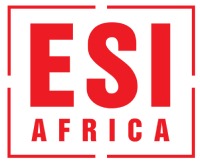How can South Africa use carbon markets to boost NDCs?
Nationally Determined Contributions (NDCs) embody South Africa’s efforts to reduce national emissions and adapt to the impacts of climate change.
Government is set to introduce a new framework to guide and expand high-integrity carbon markets in South Africa.
Addressing the Carbon Markets Africa Summit 2025, the Minister of Forestry, Fisheries and the Environment, Dr Dion George, said when carbon markets are governed with integrity, they can mobilise finance, transfer technology, and drive inclusive growth.
“The framework lays the foundation for developing, governing, and scaling high-integrity carbon markets in South Africa. It is designed to create an enabling environment for credible, transparent, and socially inclusive carbon market activity, aligned with our Nationally Determined Contributions and with the Paris Agreement’s cooperative mechanisms,” the Minister said in Johannesburg on Wednesday.
Nationally Determined Contributions (NDCs) embody South Africa’s efforts to reduce national emissions and adapt to the impacts of climate change.
Building a credible system for carbon markets to thrive
“The future of carbon markets will be defined not by promises but by performance. Our goal is simple: to build a credible system that attracts investment, delivers real emission reductions, and creates lasting value for our people. Through integrity, innovation and partnership, Africa can lead a new era of climate-smart growth,” George said.
The Draft South African Carbon Markets Framework was developed under Article 6 of the Paris Agreement. This draft framework has been widely consulted upon, with input from stakeholders across government, business, and civil society. It is now being vetted and will be gazetted soon.
“Carbon markets are not a substitute for national action. They are a tool to deepen ambition, enable cooperation, and deliver measurable results. They provide a pathway for countries to work together while maintaining environmental integrity and national sovereignty,” the Minister said.
Building on this foundation, the Department of Forestry, Fisheries, and the Environment is developing a complementary instrument, the Draft Carbon Credit Revenue Plan, which aims to monetise the department’s natural assets and generate new sources of sustainable revenue.
“Together, these two draft instruments represent a bold and integrated approach to advancing climate finance: a framework for integrity, a plan for implementation, and a vision for inclusive growth,” he said.
Draft Carbon Credit Revenue Plan
George said the objectives of the Draft Carbon Credit Revenue Plan are threefold:
- First, to generate sustainable revenue by converting South Africa’s forests, wetlands, oceans, and protected landscapes into high-integrity carbon credits.
- Second, to reinvest this revenue into environmental programmes that advance national priorities and NDC targets, ensuring that ambition is matched by practical implementation.
- Third, to reinforce South Africa’s leadership in climate innovation by demonstrating that environmental protection can drive economic growth, social inclusion, and resilience.
The Draft Carbon Credit Revenue Plan builds on the department’s existing portfolio of scalable programmes, which align with South Africa’s Group of Twenty (G20) priorities: biodiversity and conservation, climate change, oceans, chemicals and waste, and land use.
“In Forestry and Land Use, our Ten Million Trees Programme is ready to be scaled as a major afforestation project. We are advancing sustainable forest management and REDD+ [reducing emissions from deforestation and forest degradation in developing countries] initiatives that protect vital ecosystems.
“In Biodiversity and Conservation, we are managing national parks and protected areas as verified carbon sinks, restoring degraded grasslands and biomes, and creating jobs through ecological restoration,” the Minister said.
Water and the blue economy
Regarding the Oceans and Coasts, South Africa’s 3 000 kilometres of coastline holds immense Blue Carbon potential.
The restoration of mangroves, seagrass meadows, and salt marshes supports climate mitigation and coastal community resilience.
“In Chemicals and Waste, we are capturing and destroying greenhouse gases from landfills, wastewater, and industrial processes, turning pollution into both a financial and environmental asset.
“We will begin with a comprehensive status analysis and a strong institutional setup, including an inter-agency arrangement. Pilot projects will be launched in the identified sectors to demonstrate early success,” he said.
A fair revenue-sharing model will ensure that benefits flow to the national fiscus, into project expansion, and to local communities who are the stewards of our land.
South Africa’s approach aligns with the Paris Agreement’s Crediting Mechanism, which ensures that South African credits are credible, respected, and tradable internationally.
Cover photo: [divedog]©123rf.com


